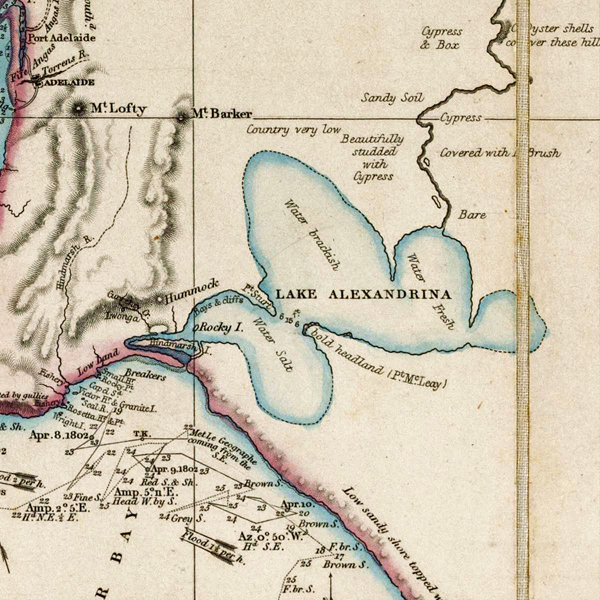YESTERDAY the South Australian government yet again displayed its contempt for science and history by claiming yet again that Lake Alexandria is, and always has been, a freshwater lake.[1]
I’m hopeful that the local tabloid, the Adelaide Advertiser, will publish my reply. So far this News Ltd publication has refused to let me respond to various articles about me.
My Letter to The Editor:
Paul Caica, South Australian Minister for Water and the River Murray, claims that in wishing to restoring the Murray River estuary, I show disrespect for scientific work and the culture of the region’s traditional owners, the Ngarrindjeri (Lakes flood plan defiles the existing evidence, Adelaide Advertiser, March 31, 2009).
In fact, all the science published in peer-reviewed journals is on my side. Minister Caica’s claim is consistent with the Book of Genesis in the Bible inferring the estuary came ready-formed with a sand barrier and central lagoon. But such an interpretation denies geological and environmental reality. The scientific literature clearly shows that Lake Alexandrina has a marine origin that dates back to a period of late Pleistocene and early Holocene sea level rise. Since this time the coastal sand barrier and related landward estuarine environments have evolved and changed naturally, including manifold changes in salinity.
The Murray Mouth barrages were built to stop saltwater intrusions that were a problem from the time of European settlement. Indeed, long before the development of upstream irrigation, the Southern Ocean would push in each autumn and for longer periods during drought.
The seawater poured in through the Murray’s mouth and sometimes worked its way across the lake and then into the River Murray proper as far north as Mannum. This is recorded in the patangi – a song category of the Ngarrindjeri. In one of these stories, the River Murray drags trees along as sea water flows upstream as far as Mypolonga. The river water was too salty to drink and the Ngarrindjeri were forced to dig wells about two feet deep to get drinkable water.
Minister Caica really should read more and/or consult more widely to avoid making foolish statements.
Jennifer Marohasy
Biologist, Noosa, Queensland


 Jennifer Marohasy BSc PhD has worked in industry and government. She is currently researching a novel technique for long-range weather forecasting funded by the B. Macfie Family Foundation.
Jennifer Marohasy BSc PhD has worked in industry and government. She is currently researching a novel technique for long-range weather forecasting funded by the B. Macfie Family Foundation.